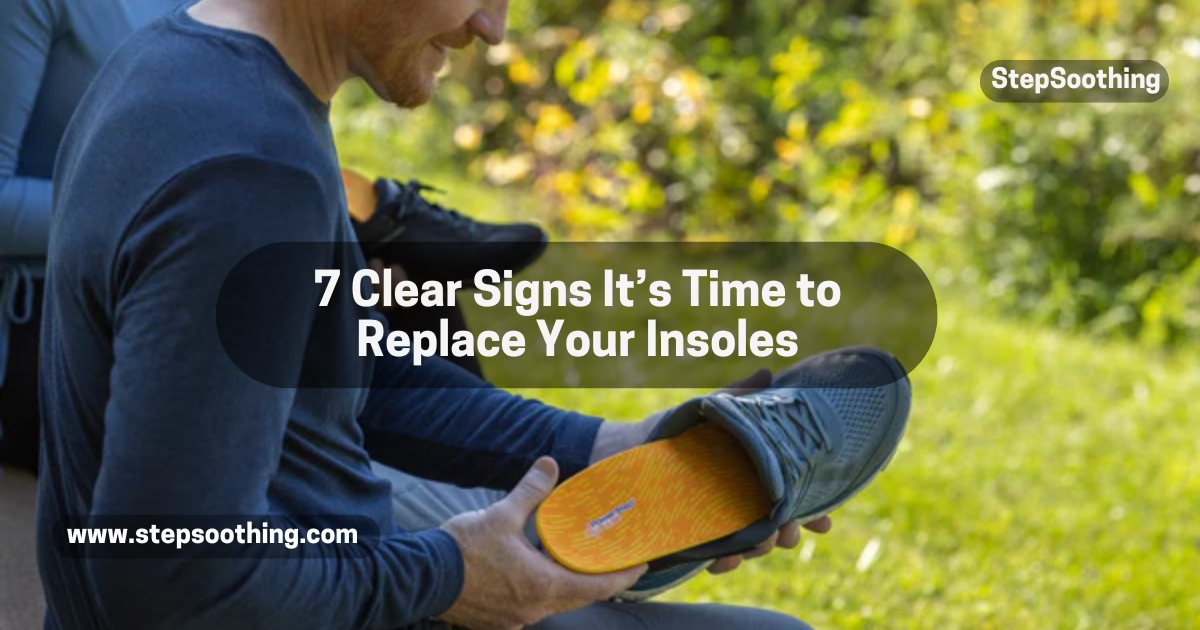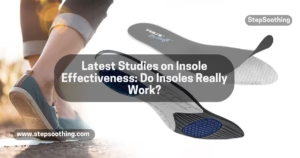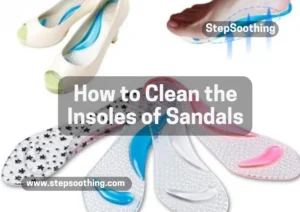When was the last time you thought about your insoles? Don’t worry; you’re not alone. Most of us forget that insoles are the unsung heroes of our footwear, quietly supporting every step, jump, or sprint. But when they start wearing out, the consequences can range from mild discomfort to serious health issues. If any of the following signs resonate with you, it might be time to say goodbye to your old insoles and hello to Remind Insoles—a game-changer for your feet.
Let’s dive into the seven important signs that tell that your insoles need an upgrade—and why Remind Insoles might be the perfect solution for your feet.
Signs you need New Insoles
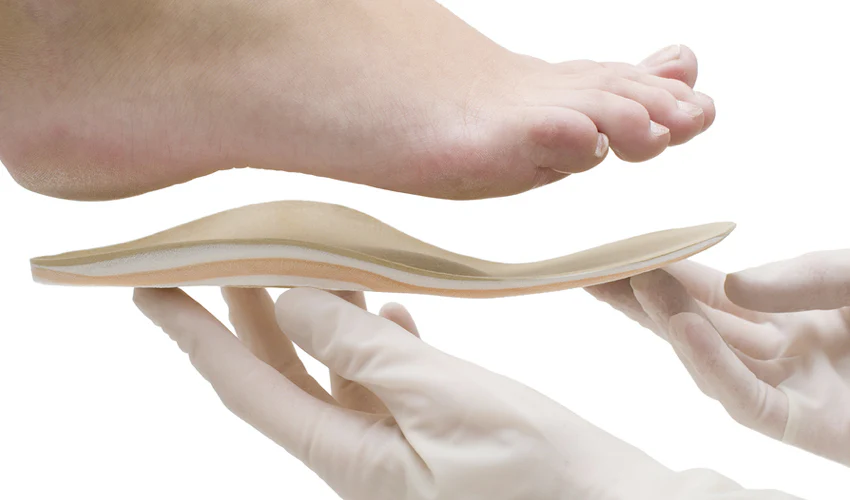
Why Replacing Insoles is Essential
Think of your insoles as the foundation of your shoes. They provide cushioning to absorb shock, support to keep your feet aligned, and help prevent injuries by reducing stress on your joints.
But over time, even the best insoles break down. Worn-out insoles can lead to foot pain, altered posture, and even reduced athletic performance. That’s why regularly checking and replacing them is essential.
Switching to high-quality options like Remind Insoles isn’t just about replacing what’s old; it’s about upgrading. With features like durable materials, advanced cushioning, and antimicrobial properties, they’re designed to solve common problems and keep you moving comfortably.
7 Signs You Need to Replace Your Insoles
1. Visible Wear and Tear
Take a good look at your insoles. Do you see cracks, holes, or areas that have flattened out? These are clear signs that your insoles have lost their structural integrity. Without proper support, your feet bear the brunt of every step, leading to discomfort and potential injury.
Why It Matters: Flattened or damaged insoles mean your feet aren’t getting the cushioning they need. Over time, this can lead to discomfort or even injuries.
2. Loss of Cushioning
Do your shoes feel less comfortable lately? Can you feel the ground more than you used to? This indicates that your insoles’ cushioning has deteriorated. Reduced cushioning means less shock absorption, putting extra stress on your feet and joints.
Why It Matters: Lack of cushioning can cause foot fatigue, joint pain, and even long-term problems like arthritis.
3. Persistent Foot Pain
If you’re experiencing pain in your heels, arches, or the balls of your feet, it’s a red flag. Worn-out insoles can’t properly distribute pressure or provide the support your feet need.
Why It Matters: Foot pain can lead to more serious conditions like plantar fasciitis or stress fractures if ignored.
4. Unpleasant Odors
If your insoles smell, it’s not just unpleasant—it’s a sign of bacteria buildup. Over time, moisture and sweat seep into the material, creating a breeding ground for germs.
Why It Matters: Bacteria can compromise hygiene and make your shoes an uncomfortable place for your feet.
5. Decreased Performance
Have you noticed a decline in your balance, stability, or agility? Insoles play a crucial role in athletic performance, and worn-out ones can hold you back.
Why It Matters: Poor performance can affect your workouts or daily activities, making movement less efficient and more tiring.
6. Changes in Posture or Gait
Worn-out insoles can alter the way you stand or walk, leading to improper alignment. This can cause pain in unexpected places, like your knees or lower back.
Why It Matters: Posture and gait issues can snowball into chronic problems if not addressed.
7. Noticeable Discomfort
If walking, running, or even standing for long periods has become uncomfortable, it’s a major red flag. Comfort is crucial for maintaining an active lifestyle, and compromised insoles can make even simple activities a struggle.
Why It Matters: Discomfort can hold you back from enjoying everyday activities or staying active.
Benefits of Upgrading
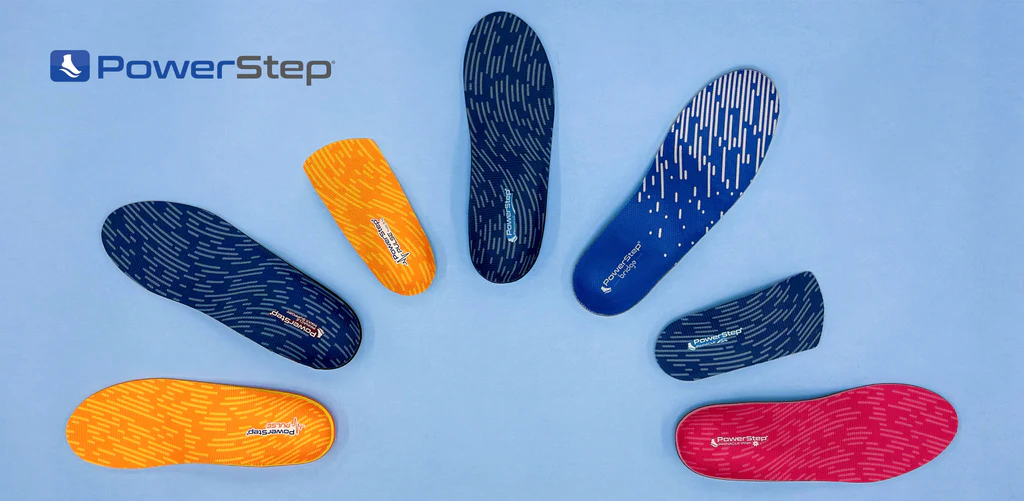
Benefits of Upgrading to Power step Insoles
Powerstep Insoles are a popular choice for individuals who need strong arch support and pain relief. Here’s why they’re a standout option:
- Medical-Grade Support: Recommended by podiatrists for managing foot conditions like plantar fasciitis and overpronation.
- Double-Layer Cushioning: Provides both comfort and durability, ideal for daily wear.
- Semi-Rigid Arch Design: Offers structured support while allowing natural foot movement.
- Anti-Microbial Top Layer: Keeps feet fresh and helps prevent odor.
- Wide Range of Sizes: Ensures a precise fit for most shoe types, from athletic to casual footwear.
Powerstep insoles are perfect for anyone seeking relief from foot pain or enhanced alignment for improved mobility.
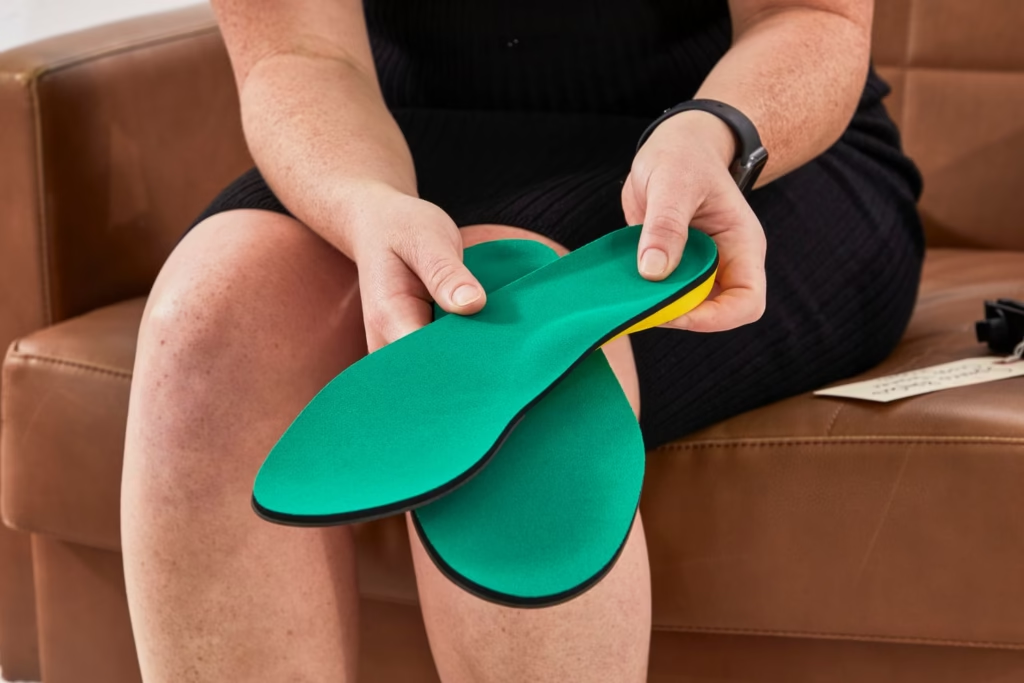
Benefits of Upgrading to Spenco Insoles
Spenco Insoles are designed with a focus on comfort and injury prevention, making them ideal for active lifestyles. Here’s why they shine:
- Energy-Return Technology: Absorbs shock and redistributes pressure evenly across your feet.
- 4-Way Stretch Fabric: Reduces friction and prevents blisters during long activities.
- Orthotic Arch Support: Provides extra stability, particularly beneficial for those with flat feet or plantar fasciitis.
- Deep Heel Cup: Ensures proper alignment and reduces strain on joints.
- Multi-Purpose Use: Suitable for sports, casual wear, and work environments.
Spenco insoles are a reliable option for individuals looking for a blend of comfort, support, and durability.
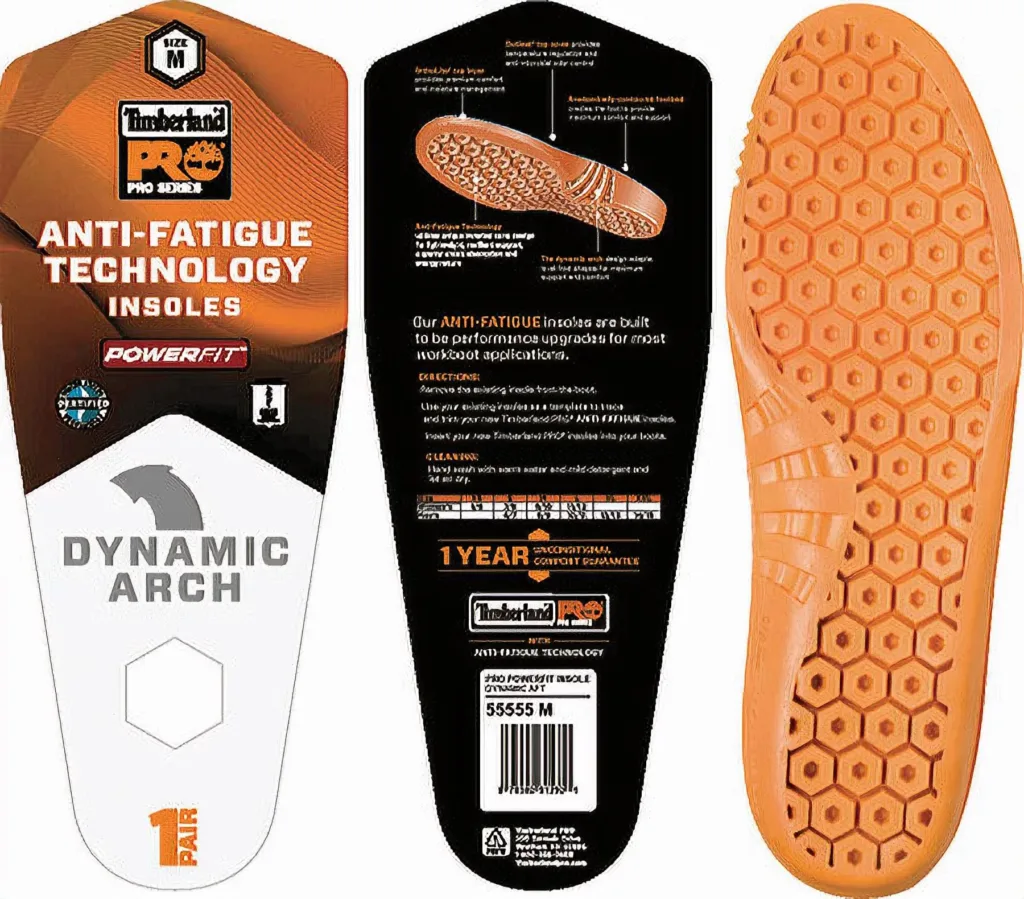
Benefits of Upgrading to Timberland PRO Insoles
Timberland PRO insoles cater to individuals with demanding jobs or lifestyles that require extended hours on their feet. Here’s why they excel:
- Anti-Fatigue Technology: Absorbs shock and returns energy to keep you moving comfortably all day.
- Dynamic Arch Design: Provides adaptive support for various foot shapes and sizes.
- Durable Build: Crafted to withstand heavy-duty use, ideal for work boots and outdoor footwear.
- Moisture-Wicking Fabric: Prevents sweat buildup and keeps your feet dry.
- Odor Control: Integrated antimicrobial features keep insoles fresh after long use.
Timberland PRO insoles are perfect for workers and outdoor enthusiasts who need comfort and reliability in tough environments.
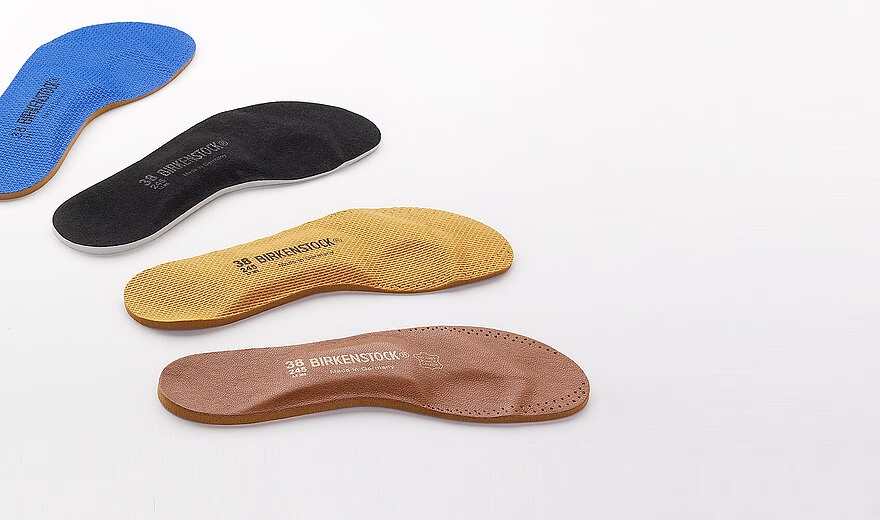
Benefits of Upgrading to Birkenstock Insoles
Birkenstock is famous for their ergonomic footbed design, and their insoles extend these benefits to any shoe. Here’s why they’re worth upgrading to:
- Contoured Footbed: Mirrors the natural shape of your foot, promoting proper alignment and support.
- Cork-Latex Blend: Provides long-lasting comfort and adapts to your unique foot shape over time.
- Heel Mold: Stabilizes your foot and reduces pressure on your joints.
- Natural Materials: Eco-friendly construction ensures breathability and comfort.
- Universal Fit: Compatible with most types of shoes, from casual to dress footwear.
Birkenstock insoles are ideal for those who prioritize natural support and eco-conscious design.
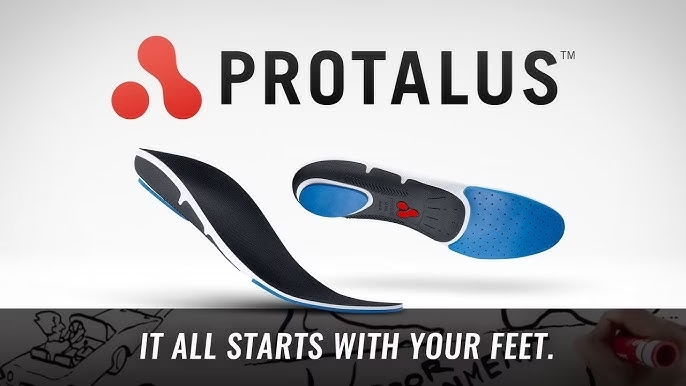
Benefits of Upgrading to Protalus Insoles
Protalus insoles are designed with a science-backed focus on alignment and pain relief. Here’s what makes them exceptional:
- Tri-Planar Alignment System: Improves body alignment to reduce pressure on feet, knees, and back.
- Shock-Absorbing Foam: Minimizes impact and enhances comfort during movement.
- Deep Heel Cup: Provides superior stabilization and reduces overpronation.
- Customizable Fit: Fits seamlessly into various shoe types for versatility.
- Pain Management: Proven to help with plantar fasciitis, bunions, and shin splints.
Protalus insoles are an excellent investment for individuals seeking both immediate comfort and long-term pain relief.

Benefits of Upgrading to Remind Insoles
Remind Insoles don’t just replace your old ones; they elevate your comfort and support. Here’s what makes them a top choice:
- Durable Materials: Designed to last, saving you from frequent replacements.
- Advanced Cushioning: Superior shock absorption for all-day comfort.
- Antimicrobial Properties: Keeps odors at bay and ensures hygiene.
- Alignment Support: Promotes proper posture and gait.
- Custom Fit: Perfectly tailored to active lifestyles.
With options like Cush, Medic, Destin, and Remedy, there’s a Remind Insole for every need.
Tips for Extending Insole Life
Want to get the most out of your insoles? Here are a few tips:
Keep Them Clean:
- Wipe away dirt and debris with a damp cloth regularly.
- Hand wash with mild soap and water for a deeper clean; air dry completely.
- Avoid soaking insoles or using a dryer to prevent damage.
Rotate Insoles:
- Alternate insoles between multiple pairs of shoes to reduce wear.
- Gives insoles time to rest, especially after heavy use.
Dry Them Properly:
- Remove insoles from shoes to air dry after workouts or if they get wet.
- Avoid direct heat sources like radiators to prevent warping.
- Use a shoe dryer for quicker drying without damaging the material.
Store Them Correctly:
- Keep insoles flat to maintain their shape.
- Store in cool, dry places and avoid hot or humid environments.
Check for Wear and Tear:
- Look for cracks, holes, or flattened areas.
- Replace insoles if cushioning feels inadequate or you feel ground impact.
Use Antimicrobial Sprays:
- Apply odor-fighting or antimicrobial sprays to keep insoles fresh.
- Let them dry completely before putting them back into shoes.
Choose Quality Insoles:
- Invest in durable, high-quality insoles for longer-lasting performance.
Replace Regularly:
- Replace insoles every 6-12 months, depending on usage and wear.
- Upgrade as soon as you notice discomfort or reduced effectiveness.
- Clean Them Regularly: Use a damp cloth and mild soap to keep them fresh.
- Let Them Breathe: Remove insoles after wearing to air them out.
- Check for Wear: Replace them as soon as you notice signs of deterioration.
People Also Asked about Signs you need new insoles
How often should I replace my Insoles?
Insoles typically last 6–12 months, depending on usage and quality. If you notice discomfort, reduced cushioning, or visible wear like cracks or flattening, it’s time to replace them. Premium insoles like Remind or Dr. Scholl’s may last longer due to durable materials.
Can I wash my Insoles?
Yes, most insoles can be cleaned, but it’s important to follow the care instructions. Use mild soap, lukewarm water, and a soft cloth to clean them. Always air dry completely before placing them back in your shoes. Insoles with antimicrobial properties, like Remind or Superfeet, require less frequent cleaning.
Which Insoles are best for foot pain or plantar fasciitis?
For foot pain or plantar fasciitis, insoles with superior arch support and cushioning are ideal. Brands like Superfeet (especially their Green series) and Powerstep are known for addressing these issues, while Remind Medic insoles are specifically designed to align your feet and alleviate pressure points.
How do I know if my Insoles fit properly?
Insoles should fit snugly in your shoe without slipping or curling. If they feel too loose or tight, consider trimming them to size (if the brand allows). Custom-fit options, like Remind or Currex, ensure a perfect fit for your feet and activities.
What makes premium insoles better than stock insoles?
Premium insoles offer advanced features like:
- Durable materials for long-lasting support.
- Enhanced cushioning for shock absorption.
- Antimicrobial properties to reduce odors.
- Proper alignment support to prevent pain.
Brands like Remind, Dr. Scholl’s Custom Fit, and Superfeet go beyond basic cushioning to provide comfort, posture correction, and long-term performance benefits.
Conclusion
Insoles are an often-overlooked but essential part of footwear that significantly impacts foot health, posture, and overall comfort. Regularly evaluating and replacing insoles can prevent issues like foot pain, altered posture, and reduced athletic performance. Signs like visible wear, loss of cushioning, unpleasant odors, or discomfort are clear indicators that it’s time for a replacement. High-quality options, such as Remind Insoles, provide superior cushioning, durability, and alignment support, ensuring optimal foot health and performance.
When it comes to how often to replace shoe insoles, it depends on their usage and quality, but typically, every 6–12 months is recommended. Additionally, storing insoles properly in a cool, dry place and allowing them to air out after use can extend their lifespan. For those wondering how to choose the right insoles, factors like arch support, cushioning, and material durability should guide your decision. Premium insoles like Remind, Spenco, and Powerstep cater to various needs, from casual comfort to specific foot conditions like plantar fasciitis.
Take proactive steps to care for your insoles and upgrade when necessary. Your feet—and your entire body—will thank you for the support!
